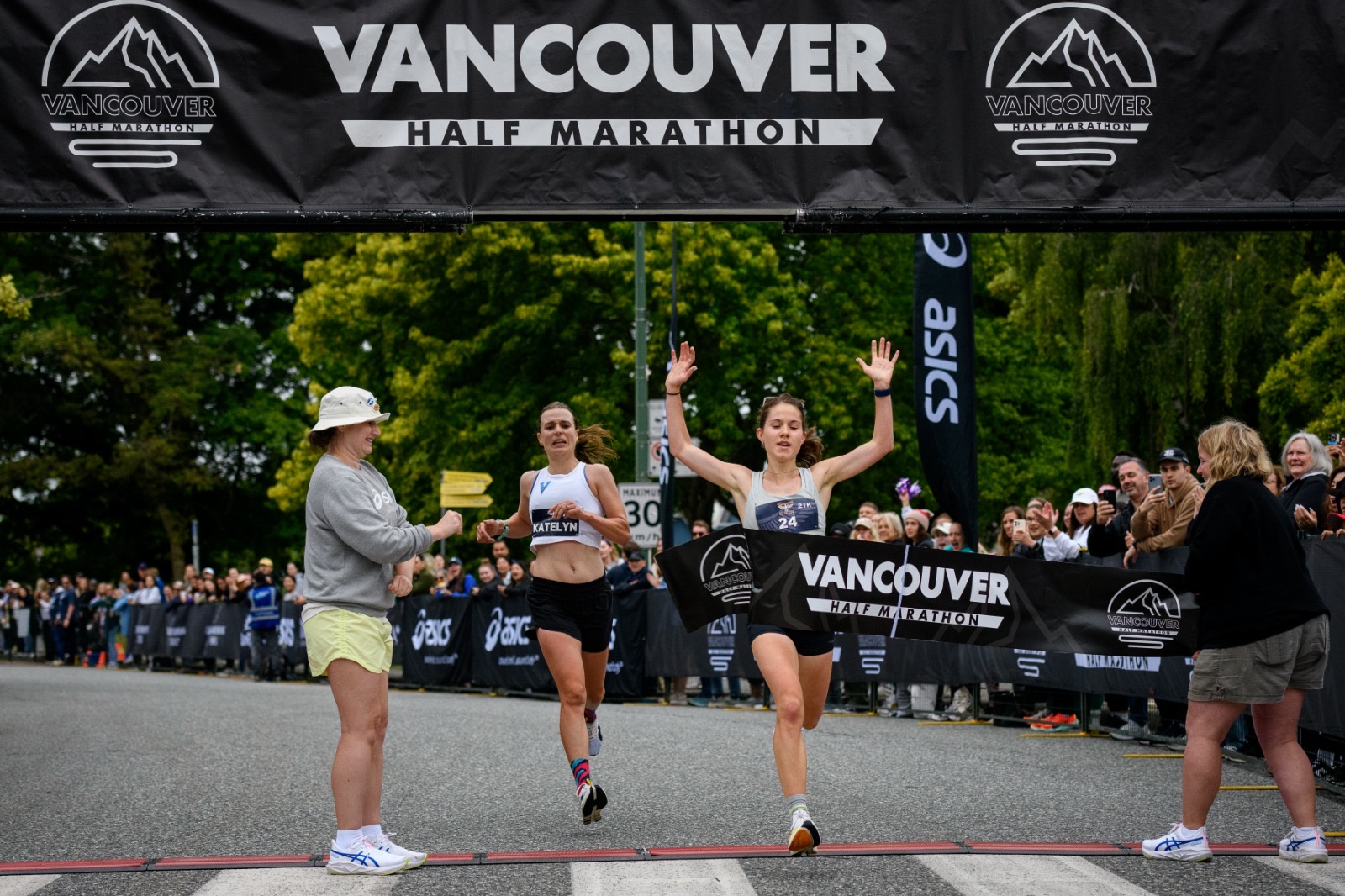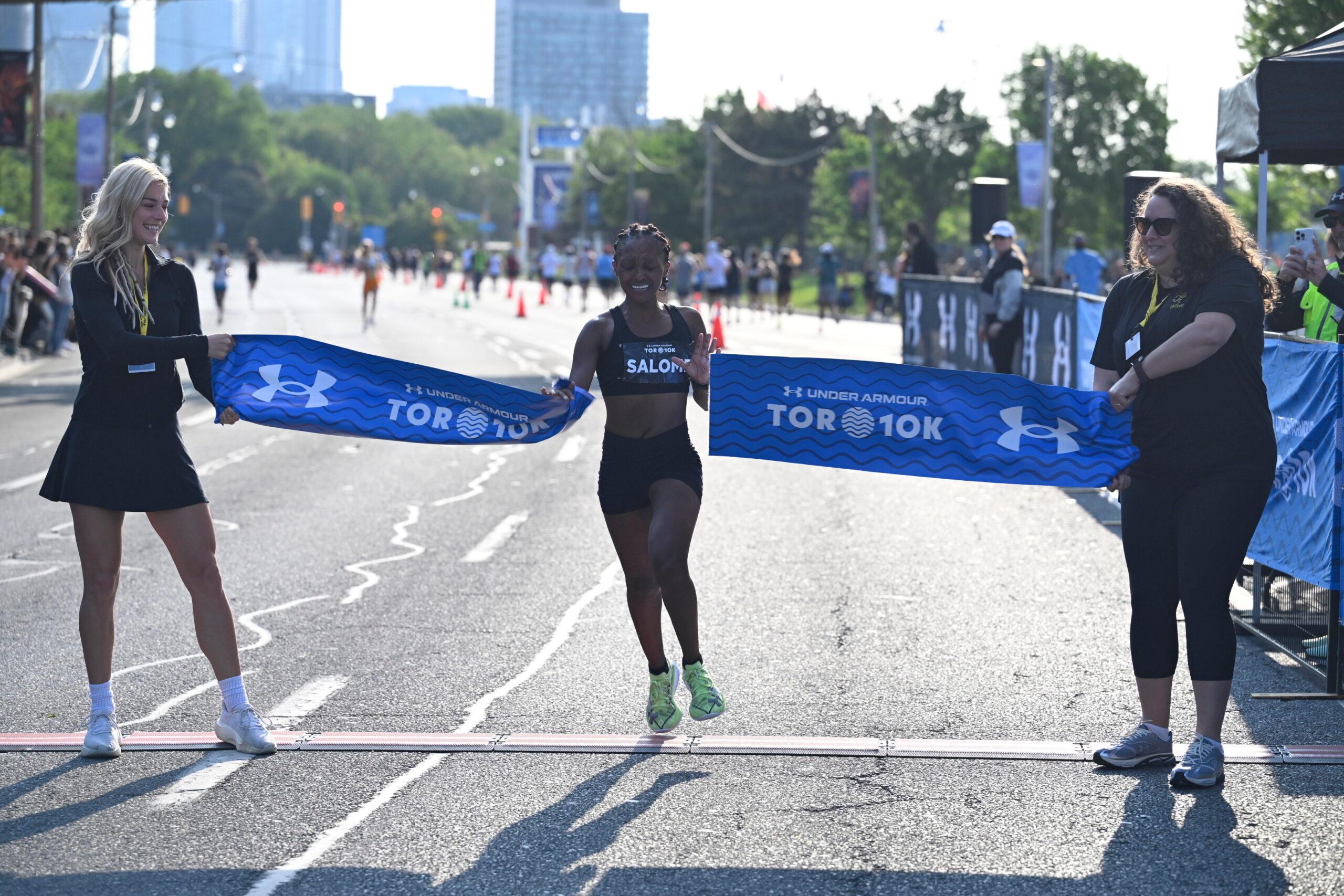
Getting into the routine of training gets people thinking about personal bests, and wanting to run faster than before. At the start of training the thought of crushing a previous time may feel far-fetched. However, as runners get into a rhythm and regain their fitness, the idea of trying to crush their time in an upcoming race feels more achievable, assuming your training has set you up to do so. Here are a few tips for gearing up to run a fast 10K:
Incorporate specific speed work:
Interval training is key when trying to increase your speed over 10K. It allows the body to adapt physiologically to the demands of the race. Intervals can be a mix of different duration, pace and distance. Typically interval workouts are done at race pace or faster. Use anything from track intervals, sustained effort tempo runs, hill repeats, and fartleks to keep your training varied and fun.
Example workouts:
- Mile repeats: 4-6 x 1 mile with 2-3 minutes recovery jog. Start at 4 reps, then build towards 6. Aim for these to be around race pace.
- Minute reps: 12-20 x 1 minute with 1 minute recovery jog. Remember the recovery time is shorter on these so try to keep your hard intervals at a pace that you can maintain for the whole workout.
- 1km floats: 5-10 x 600m “on”/400m “off”. This is a sustained effort workout where the 400m “off” is still as a good pace. Think of it like 600m at 10km pace; 400m at marathon pace. It helps your body to recycle any lactate buildup so you’re more efficient.
Maintain endurance:
While running a fast 10K requires some speedwork, don’t forget how important having good endurance is. If you have a good endurance base, running 10K won’t seem terribly long. Having a combination of getting your legs used to running further than 10K, as well as running shorter intervals as a faster pace is essential. Consistent training and regular long runs will effectively improve your endurance. A common duration for a long run while gearing up for a 10K race is about 90 minutes long.
Understand pacing:
Realize that running hard for 10K is tough. It requires discipline in order to effectively push your limits but remain relaxed. Well, until the last 400m and then you just have to give whatever you have left in the tank! It’s easy to get caught up in the rush of adrenaline that surges through your body when the starting gun goes off. If that happens, it could come back to bite you in the butt when your legs start to shut down at 6K. Before the race starts, sit down and realistically determine what time you think you’re capable of running. Then, figure out the splits required to hit that time. There are lots of online paces calculators that can help determine your average pace which will hopefully keep you controlled throughout the race. Take note of any big hills that could affect your time, and adjust accordingly. Try to race evenly, or even negative split (running the second half of the race faster than the first).
Avoid overtraining:
When adding speed into your training program, know that it takes more out of you than running easy all the time. Overtraining is what happens when you put too much stress on your body than it can handle and adapt to. To avoid this from happening, keep this points in mind:
- Keep track of your weekly mileage and don’t increase your mileage than more than 10% per week.
- When incorporating speed work, reduce your mileage. Intensity is tough to measure, so cut back from excess mileage to balance out the training.
- Don’t increase mileage and intensity simultaneously.
- Schedule rest days.
- Alternate hard workouts with easy runs, or cross-train instead of piling on “junk miles”.
Pick a potential PB course:
Throughout training you’ll understand your strengths and weaknesses. If you’re a powerhouse on hills, choose a rolling course; if you love loops, don’t choose an out-and-back course; if you thrive on flats, pick one that isn’t exposed to the elements. Typically a flatter course is the fastest choice, as long as it’s not too windy or twisty. Also, choose a race that has a lot of people registered, or has a history of runners that are around your target time. Check previous year’s results and see if it’s likely that there will be a group to tuck in with.
Taper, taper, taper:
After putting in months of training, the last thing you want to do is to overdo it the week before the race. In the final week before the race, it’s unlikely you’ll gain any additional fitness, and instead could tip you over the edge. To avoid this from happening, reduce your mileage and intensity of yours runs, with your last speed session about 4-5 days before race day, to allow your body to fully rest and be ready to roll.








